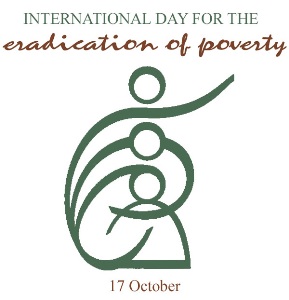-
Advocacy Theme
-
Tags
- Abortion
- Adoption
- Caregiving
- CEDAW
- Disability
- Domestic Violence
- Domestic Workers
- Harassment
- Healthcare
- Housing
- International/Regional Work
- Maintenance
- Media
- Migrant Spouses
- Migrant Workers
- Muslim Law
- National budget
- Parental Leave
- Parenthood
- Polygamy
- Population
- Race and religion
- Sexual Violence
- Sexuality Education
- Single Parents
- Social Support
- Sterilisation
- Women's Charter
Gender dimension to inequality in Singapore
October 22nd, 2013 | Employment and Labour Rights, Letters and op-eds, News, Older People and Caregiving, Poverty and Inequality, Views, Women in Leadership, Workplace Harassment
By Vivienne Wee And Sarah Hill
 Eradicating poverty remains at the core of the United Nations (UN) development agenda. Indeed, International Day for the Eradication of Poverty is observed by the UN each year on Oct 17. In Singapore, however, poverty often appears to be a peripheral issue.
Eradicating poverty remains at the core of the United Nations (UN) development agenda. Indeed, International Day for the Eradication of Poverty is observed by the UN each year on Oct 17. In Singapore, however, poverty often appears to be a peripheral issue.
Singapore has not attempted to establish a national poverty line. Nevertheless, there is clear evidence of relative poverty, as manifested in a glaring wealth divide and an unequal remuneration system. Singapore’s Gini coefficient, a recognised method of measuring income inequality, has risen from 0.4 in the 1980s to 0.473 in 2011, and to 0.478 last year, indicating increasing income inequality. In fact, according to this measure, Singapore ranks as the second most unequal economy among the world’s advanced countries.
There is also a strong gender dimension to economic inequality in Singapore. Statistics from the Ministry of Manpower (MOM) show that women earn less than men, even when they have the same working hours and qualifications as their male counterparts.
In 2011, MOM estimated that in blue-collar industries in particular, men earn approximately 30 per cent more than their female colleagues. Furthermore, this gender wage gap widens with age.
Unequal incomes deprive women of financial stability, access to essentials such as adequate health care, and the opportunity to accumulate adequate Central Provident Fund (CPF) savings. Women have approximately 40 per cent less savings in their CPF accounts compared with men. This explains why 64 per cent of women, compared with 38 per cent of men, rely on their immediate families to assist with medical expenses, according to a National University of Singapore-Singapore Health Services 2010 study on health- care financing.
Women are also under-represented in the workplace. Last year, labour force participation for the 25-64 age group was 70.9 per cent for women and 92.5 per cent for men, indicating a huge disparity in economic participation and income-earning capacity across all socio-economic classes. According to a 2012 study by the NUS Business School and BoardAgender, more than 60 per cent of Singapore Exchange-listed firms do not have a woman on their boards, and only 7.3 per cent of the current 5,000 board positions available are held by women,
Additionally, women’s financial well-being is directly affected by the unequal burden of domestic responsibilities. Globally and in Singapore, a disproportionate responsibility for caregiving for children, the elderly or disabled family members falls on women, often as unpaid labour.
Pushed into shouldering this demanding role, women are often hampered by inflexible workplace conditions and lack of access to affordable caregiving alternatives. Without a regular income, women sacrifice financial autonomy, adequate funds for health care, a decent standard of living and opportunities for self-development.
This has consequences for global business too. Dr Klaus Schwab, executive chair of the World Economic Forum (WEF), notes: “Empowering and educating girls and women and leveraging their talent and leadership fully in the global economy, politics and society are fundamental elements of succeeding and prospering in an ever more competitive world.”
The WEF’s 2012 Global Gender Gap Report ranks Singapore as 55th out of 153 states (or 26th among 45 high-income countries). The Philippines, despite being less developed than Singapore, ranks eighth on the list.
Countries succeed in reducing the gender gap through policies that enable both parents to cope with work and family. The result is shared participation in caregiving, and a more fulfilling home life for all. It also produces a more equitable distribution of domestic labour, higher female employment participation rates and a more robust, productive and equitable economy.
If Singapore truly intends to create a fair and inclusive society where everyone benefits from national progress, it must address the issue of inequality and its disproportionate impact on women.
The first writer is the research and advocacy director at Aware, and the second is an Aware member.
This article was originally published in the Straits Times on 18 October 2013.



